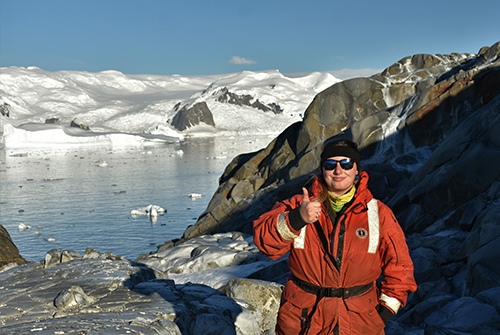 The Ends of the Earth
The Ends of the Earth
Texas A&M University at Galveston student Katie Westmoreland ’16 enjoyed the trip of a lifetime at the bottom of the world: Antarctica. The Dayton, Texas, native spent six weeks on the continent this spring with 22 other researchers as part of an internship with the National Science Foundation’s Long-Term Ecological Research Program.
A double major in marine fisheries and marine biology, she studied topics including climate change, ocean currents and marine diets alongside some of the world’s top scientific minds.
“The primary investigators of this program have studied Antarctic ecosystem changes for 25 years,” Westmoreland said. “Climate change occurs more rapidly at the poles than in other parts of the world, so studying temperature fluctuations and annual declines in sea ice is critical to understanding Antarctic ecology.”
Particularly, Westmoreland’s research focused on zooplankton such as krill and salps.
“These organisms are two important parts of the marine food web easily influenced by temperature and sea ice coverage,” Westmoreland said. “Krill especially is a key food source for whales, penguins and seals, so understanding their distribution and abundance helps us learn about other parts of the marine food web in Antarctica.”
Since ecological processes do not happen rapidly, long-term data sets help researchers understand how parts of the food web interact over time and whether climate change plays a role.